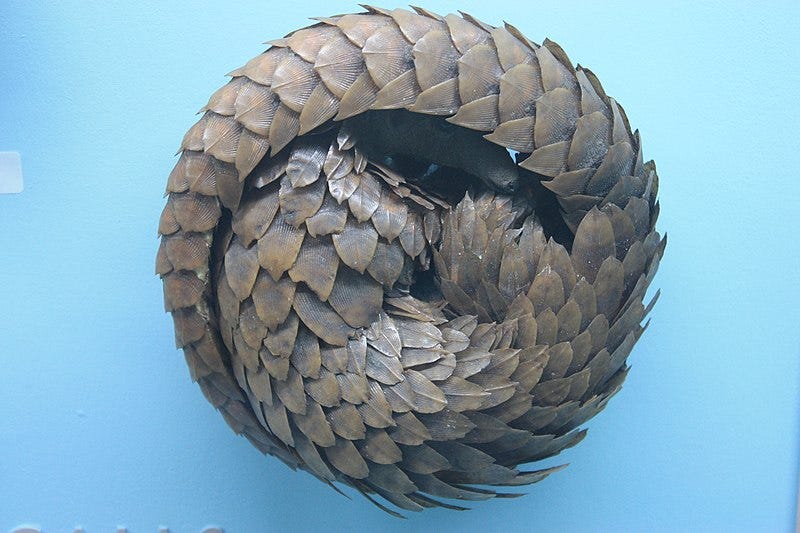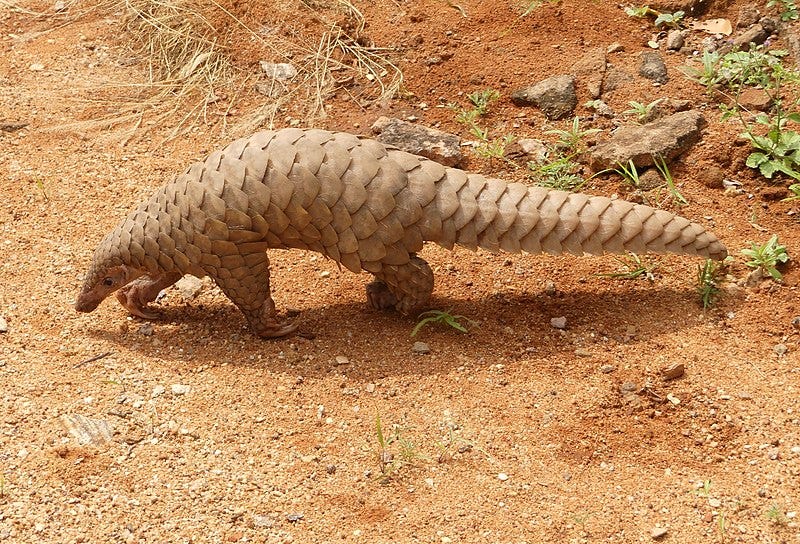If the surface were “human,” our immune system would not recognize it as “foreign,” and we would not develop immunity.

Where do I start?
I’m a molecular biologist, a neuroscientist, and a practicing physician (so I deal with infections). I am not a virologist, nor an infectious disease doc.
But I recently saw a brief piece postulating on the mechanisms of COVID-19 that stretched scientific knowledge a bit.
So I will try to clarify.
COVID-19 is an encapsulated sense RNA virus. This means it has a membrane around it with some protein (S-protein, for “Spike”). These proteins are what allow the virus to bind to a target cell in the host. They are not bat, not human (and not pangolin) but come from one of the four genes expressed by the virus.
Also, if we become immune to the virus, we will likely become immune to these proteins (S-protein or other surface proteins), and that’s where vaccines are likely to focus. Note again the S-protein is not specifically human or bat, but it could develop a mutation that would make it more likely to bind in a human (point mutation). This is a random, natural process that happens all the time for many viruses (e.g., flu). The actual binding site in host is the ACE2 receptor, and the virus typically attacks lungs (not just corona-19, all similar viruses).
Thank god this virus doesn’t attack the immune system to destroy our capacity to fight its infection. That’s a real nightmare, as with HIV/AIDS.
Once someone (say Human Zero, thought to be in China in December 2019) gets exposed, which would happen through droplets for this size virus, unless they go through an aerosolizer — still then the virus has to go through several steps to establish infection. It has to bind the new host in the appropriate tissue and then get absorbed. Once absorbed, the virus is what’s called sense RNA, so protein can be made from its genes. These are the S, E (envelope), M (membrane), and N (nucleocapsid) proteins. They are all viral proteins, not human or otherwise. With replication of the RNA, these proteins are then packaged into new virus particles. Most of this is pretty automatic, but none will happen if the S-protein cannot bind with and fuse the virus to the host cell.
Once produced, the virus can then be released (coughed out in a droplet) and might infect someone else. Again the genes involved are viral genes, not human, and the surface of virus, which would trigger our immune defenses, is still viral.
If the surface were “human,” our immune system would not recognize it as “foreign,” and we would not develop immunity.
Also, thank god this virus doesn’t attack the immune system to destroy our capacity to fight its infection. That’s a real nightmare, as with HIV/AIDS.
Regarding our defenses: NO ONE is intrinsically immune to a new virus without exposure. We have the capacity to develop immunity, but are not immune unless we had a prior exposure or a vaccination for the virus (or a virus with very similar surface proteins, eg vaccinia virus and chicken pox). We develop an immune response to the virus after our body sees the foreign object (virus) and finds an epitope (an antigenic site) on the surface and generates antibodies to it. This is kind of like going into battle, figuring out what uniform the enemy is wearing, and then developing smart bombs to destroy anyone wearing this evil uniform. No joke, very efficient system. So that’s how we develop immunity, by getting exposed to enemy uniform (viral surface). This is also how vaccines will work, by presenting the coat without the soldier.

Lastly, transmission: This virus probably started in Rhinolophus affinis (a bat in China, with 96 percent similar genetic material in its version of the virus) but may have gone through the pangolin (used for Chinese medicine, illegally). Some pangolin populations show a virus with 99 percent homology to human COVID-19. Transmission across species is not uncommon for viruses (see flu, etc.).
So a small point mutation and a first exposure through contact (medicinal preparation) is not so farfetched.
***************************************

Christopher Bradley, MD, is a 55-(56 in a week)-year-old neurologist who lives in a 1704 farmhouse near Skippack, PA, with his fantastical wife, Mary, 4/5 kids, 2 dogs, and 3 cats.
He grew up in the mountains of New Mexico and glows in the dark when exposed to UV light. He studied at a variety of excellent academic institutions and sullied each of their reputations sequentially by his presence: MIT, UC Berkeley, St. John’s Santa Fe, University of New Mexico (BS, finally), Emory School of Medicine (MD, PhD) and lastly Yale (neurology residency and epilepsy fellowship). His focus in his clinical work was nurtured at Emory, which strongly emphasized the physician-patient interaction. He then practiced neurology in the forever (and ever) pleasant clime of San Diego before moving to Philadelphia. He now works at Einstein Medical Center, in Philadelphia and East Norriton. He enjoys hiking and amateur photography and playing with his Linux computers. He has no political aspirations but is often aghast at the brazen stupidity and/or ethical turpitude of politicians in state and national offices. He thinks the greatest good comes from collective action (e.g. US in World War II), but that this is also the source of the greatest evil (Holocaust). He loves dogs and pets and most people. If you want to get on his good side, just offer his some chips with homemade guacamole.








